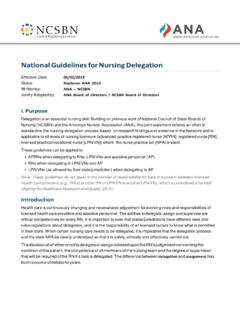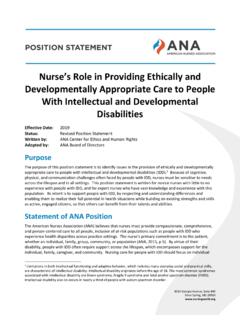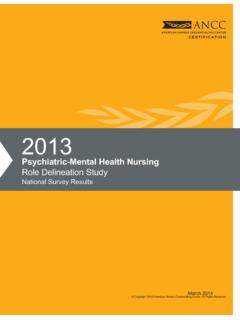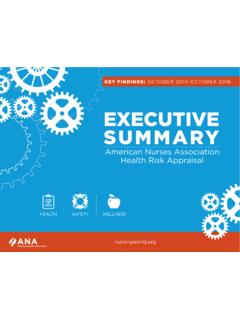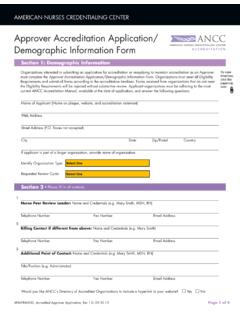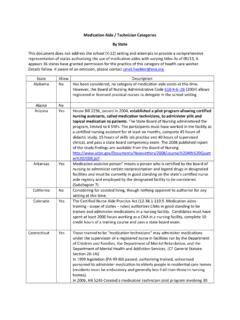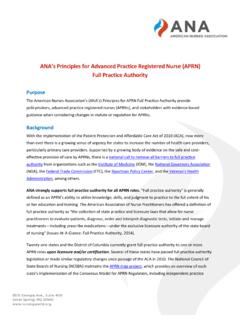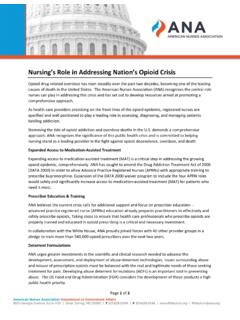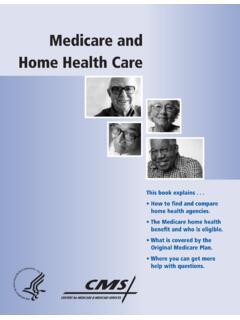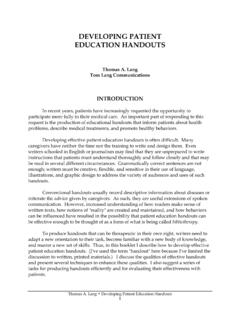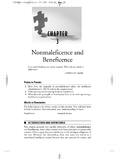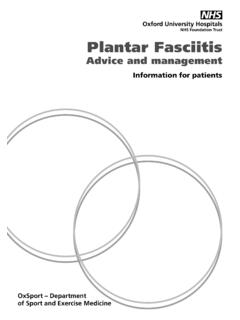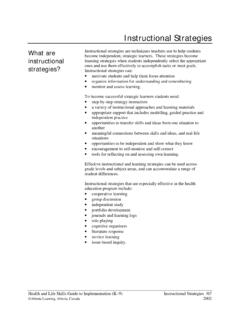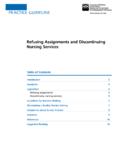Transcription of Discrimination: Protecting and Promoting Inclusive ...
1 The Nurse's Role in Addressing discrimination : Protecting and Promoting Inclusive Strategies in Practice Settings, Policy, and Advocacy effective Date: 2018. Status: Revised Position Statement Written by: ANA Center for Ethics and Human Rights Adopted by: ANA Board of Directors Purpose discrimination in any form is harmful to society as a whole and in opposition to the values and ethical code of the nursing profession, which directs the nurse to respect the inherent dignity, worth, unique attributes, and human rights of all individuals (ANA, 2015, ). discrimination has several definitions in the Merriam-Webster Dictionary, including this one: the practice of unfairly treating a person or group of people differently from other people or groups of people.
2 The purpose of this position statement is to reiterate the significance of a nondiscriminatory stance and provide guidance in creating Inclusive strategies for nursing care of all individuals of all ages and from all populations. Statement of ANA Position The American Nurses Association (ANA) recognizes progress in most national efforts to eliminate discrimination associated with race, gender, and socioeconomic status through improving access to and attainment of health care, and quality of health care. However, concerted efforts must continue for discrimination to be eliminated in all of its forms.
3 ANA recognizes impartiality begins at the level of the individual nurse and should occur within every health care organization. All nurses must recognize the potential impact of unconscious bias and practices contributing to discrimination , and actively seek opportunities to promote inclusion of all people in the provision of quality health care while eradicating disparities. ANA supports policy initiatives directed toward abolishing all forms of discrimination . History/Previous Position Statements Previous ANA position statements supported the elimination of discrimination in all of its forms.
4 The position statement on discrimination and Racism in Health Care (ANA, 1998) called for equality and justice at individual and population levels. The consequences of ignoring discriminatory behaviors and acts include 8515 Georgia Avenue, Suite 400. Silver Spring, MD 20910. an ever-increasing gap in health disparities and negation of our professional values. ANA position statement on The Nurse's Role in Ethics and Human Rights (ANA, 2016) provided additional documentation in support of eliminating discrimination based upon the ethical obligations of nurses as outlined in the Code of Ethics for Nurses with Interpretive Statements.
5 Numerous recommendations are outlined in the 2016 position statement with implications for individual nurses, the nursing profession, nursing education, nursing research, and health care organizations. This ANA position statement upholds previous position statements by denouncing discrimination of any kind. Supportive Material discrimination exists when a person is treated unfavorably or unjustly according to a particular characteristic such as race, age, gender, or religion. There are many other characteristics for which discrimination can occur. For example, discrimination can occur on the basis of pregnancy, political affiliation, or military status.
6 The list goes on and may change over time. To illustrate, we now recognize that family medical history and genetic testing can be used as a basis for discrimination . Attitudes and beliefs about personal characteristics in the forms of bias, prejudice, and stereotyping may influence behavior, but the actual act of discrimination , also known as intentional or blatant discrimination , occurs when an individual or group acts upon those attitudes and beliefs (Black, Johnson, & VanHoose, 2015; Gee & Ro, 2009). This form of discrimination may be manifested as microaggressions in the form of a microassault.
7 Implicit or unintentional discrimination can be as detrimental as intentional discrimination , although it resides outside of the perpetrator's awareness (Bertrand, Chugh & Mullainathan, 2005). Manifestations of unintentional discrimination in the form of microaggressions are unconscious behaviors considered to be rude, demeaning, or damaging to the individual or group. These microaggressions are further classified as microinsults and microinvalidations that disavow the experiences or beliefs of a group (Holley, Tavassoli, &. Stromwall, 2016; Sue, 2010). For example, when negative stereotypes are expressed about men in nursing, male nurses may experience microinsults or microinvalidations (Brody et al.)
8 , 2017). Perceived discrimination When individuals believe that they have experienced discrimination based on personal characteristics, they may exhibit poorer physical and psychological health (Sutin, Stephan, &Terracciano, 2015). The link between perceived discrimination , racism, and health, including mental health, chronic health conditions, and personality development, has been a focus for greater understanding of health disparities among ethnic groups. The effects of perceived discrimination can affect the outcomes of health care, as those reporting this type of discrimination believe they are not receiving optimal care, may delay treatment, have difficulty adhering to treatment plans, and may experience internalized racism, creating ongoing stressors that further affect health status (Blendon et al.
9 , 2007; Carlisle, 2015; Williams, 2012). While some researchers have suggested that health disparities are due to socioeconomic status (SES), other researchers have found that disparities continue even when socioeconomic factors are taken into account. That is, regardless of SES, African Americans continue to be at greater risk for hypertension as well as other metabolic disease (Monk, 2015). Health Disparities The delivery of health care has long been associated with discrimination , either perceived on the part of the patient or actual or inadvertent on the part of the provider or institution (Reynolds, 2004).
10 Hastert (2016). reported that the discrimination and resulting inequities in health outcomes were not related to income but to demographics, specifically race and ethnicity. However, Brooks et al. (2017) and Link et al. (2017) did demonstrate both a race/ethnic and socioeconomic impact on health and health outcomes. The grouping of these health outcomes is commonly referred to as health disparities (Lee, Ayers, & Kronenfeld, 2009). Stuber, Meyer, and Link (2008) suggested that stigma be included with prejudice as perceived causes of discrimination , and therefore poor health outcomes.
